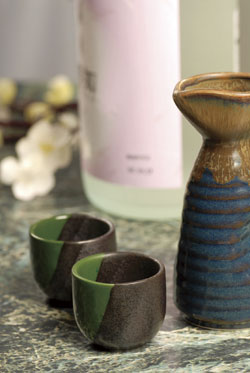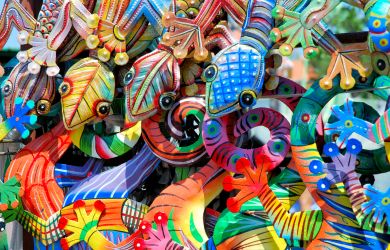
Originally published on metropolis.co.jp on January 2009

Characters to watch out for:
Shiboritate (“freshly pressed”): 搾立て
Shinshu (“new sake”): 新酒
Namazake (“unpasteurized sake”): 生酒
Along with the new year comes tons of new sake, fruits of the brewing season that began around last November. As wonderful as this stuff is, it brings with it a rash of less commonly seen terms on labels that could be potentially confusing. Let’s clear them up here.
Those apt to cause the most befuddlement are shiboritate and shinshu. Combine them with our old friend nama, and the permutations can be distracting. What’s the difference?
Shiboritate means “just pressed,” while shinshu means “new sake.” Right there you can see how things can get fuzzy. I mean, if it’s just pressed, it’s got to be new, right? And if it’s new, wouldn’t it have to be just pressed? Clarification is found in the nuances behind these terms.
Sake ferments for 20 to 35 days, after which the mash passes through a mesh of one form or another to separate the amber sake from the lees. This filtering or pressing step is called “shibori.” Accordingly, sake that has very recently gone through this is called “shiboritate.” It’s appeal is like that of Beaujolais Nouveau—brash youth with promises of better things to come in time.
Next, bear in mind that most sake is laid down for six months or so to allow the flavors to meld and settle. These days, this period can be as short as two months or as long as a year or more. But sake that is not left to mature for at least six months is called “shinshu,” or new sake.
So now you can see how anything called shiboritate is also by definition shinshu. But there could be—and are—plenty of shinshu that are not released so quickly, and might not be shiboritate.
In the interest of keeping things simple, just remember this: shiboritate refers to sake that was made perhaps a week ago. Shinshu might be as old as a month or two. But both are fresh, young—and plentiful over the next few months.
And just to keep things interesting, there are a few more points to keep in mind. First, these are not legally binding or official terms. While their use is governed by common sense, there are bound to be some exceptions. Not that producers are trying pull the wool over our eyes, but interpretations can vary from brewer to brewer. There is also lots of vagary. What is “just” pressed to one brewer might not be to another, and the same goes for what is “new” and what is not.
Another important point is that these distinctions are mutually exclusive of grade—and quality. In other words, you can have a shiboritate daiginjo, or a shiboritate junmai-shu, or a just-pressed version of futsuushu—simple table sake. And, in truth, we do see both types across all grades of sake.
Then there is the nama-zake distinction: sake that is not pasteurized is called nama-zake, and shiboritate and shinshu may or may not be nama. So we can have nama shiboritate, or the brewer may have pasteurized his just-brewed stuff to keep it stable or make it less ostentatious. The same goes for shinshu.
In fact, nama shiboritate is very, very common. If a brewer is going to offer consumers youthful, bold sake, he might as well remove anything that might contribute to mellowness. Shinshu is less commonly nama, but there is indeed plenty of that to go around as well.
Most good sake shops that have decent sized refrigerators will offer shiboritate and shinshu. Department stores around Tokyo—with all their campaigns, in-store events, and changing inventory—seem to be particularly fine places to look for these varieties. Another is the Hasegawa sake shop in the Gransta area of JR Tokyo Station. Try some soon and see for yourself how wonderful and promising youth can be.
Hasegawa Sake Shop: B1 Gransta, Tokyo station. Tel: 03-6420-3409. Open Mon-Sat 7am-10pm, Sun & hols 7am-9pm.





